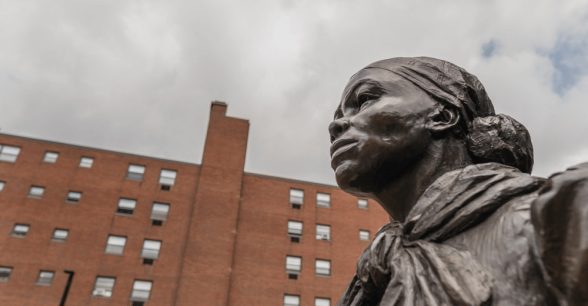The Fact that IDEA Might be Fully Funded by 2023 Isn’t an Accomplishment. It’s a Disgrace.
In the 1955 Brown vs. the Board of Education case, the court stated:
“Today, education is perhaps the most important function of state and local governments….It is the very foundation of good citizenship. Today, it is a principal instrument in awakening the child to cultural values, in preparing him for later professional training, and in helping him to adjust normally to his environment. In these days, it is doubtful that any child may reasonably be expected to succeed in life if he is denied the opportunity of an education.”
Although disability-based discrimination and race-based discrimination are separate, specific experiences, I quote this case because advocates for people with disabilities used the premise of equal educational opportunity to advocate for the inclusion of disabled children in their neighborhood schools. Moreover, the statement perfectly describes the connection between education and social justice: education helps determine the degree to which people can participate in and influence society.
Advocacy for the extension of such opportunities to people with disabilities led to the passage of the Education for all Handicapped Children Act (EAHCA) in 1977. Today, the EAHCA is known as the Individuals with Disabilities Education Act (IDEA). As a learning-disabled woman who grew up receiving special education services, I couldn’t be more passionate about IDEA. It opened a critical door to disability justice.
However, IDEA was so unpopular when it was passed that President Ford signed it in secret rather than in the Rose Garden where most major legislation was signed. There were two reasons for the legislation’s lack of popularity: it promised to end the segregation of disabled students from nondisabled students and it was expensive.
The bill contained a promise that the federal government would fund 40% of the costs of implementing IDEA. Today, the government funds just 14.7%. Noting this discrepancy, legislators have filed the IDEA Full Funding Act to fully fund IDEA by 2023. I’m glad that this bill has been filed, but what I don’t understand is why IDEA wasn’t fully funded forty-four years ago. I also don’t understand why legislators didn’t take up this cause as a bipartisan issue in the ‘80s, ‘90s or ’00s when I was going to school. There really is no excuse for that lapse.
In Massachusetts where I grew up, people discussed civil rights and social justice but they didn’t apply those insights to people with disabilities. I don’t feel comfortable chalking this failure up to simple ignorance. The disability rights movement has been going strong since the 1970s, so the bipartisan legislators who voted to lower special education standards in Massachusetts from Maximum Feasible Development to Free and Appropriate Public Education (FAPE) in 2000 to save money had already had ample time to learn about it. Special education students just weren’t on their list of priorities.
That decision was part of a pattern both in and out of the classroom. For instance, in high school, I constantly overheard teachers complaining about the presence of special education students. I was fortunate enough to take mostly advanced college preparatory courses, and sometimes the teachers would tell us things like, “We can’t go into the computer lab because the special kids are in there,” or, “I used to work with retards-oh, I’m sorry we can’t say that anymore, emotionally disturbed. Well, all I did was rip people apart to keep people from killing each other.” During that same year, the school yanked accommodations in some of the college prep courses that I was taking. When I complained, I was repeatedly reminded that kids in special education “didn’t usually go to college.”
It was over that summer that the Massachusetts legislature lowered the standard of progress for special education students from Maximum Feasible Development – the “de minimis” standard of progress required by FAPE. My school decreed that students needed to be failing before they received special education services. So, students like me who were succeeding in their academics became allegedly ineligible for special education services. Some of my services were cut, which made accessing the curriculum even harder than it already was. I kind of think that was the point. The message from the state legislature and my school was clear: You are here to take the opportunities other people choose give you. Be grateful and stay in your place.
Attitudes like that are a shame. Fully funding IDEA would help break down this kind of systemic ableism in a big way. For instance, full funding for special education would help pay for the services that high-schoolers with disabilities need to succeed academically and attain a four year degree. With college and graduate degrees, such students will be more likely to avoid poverty, access job opportunities, and be allies to one another in situations where ableism rears its head.
Yet, despite knowing the statistics about education’s connection to enfranchisement, Congress has broken its promise to fund IDEA for the last 44 years. This is largely due to the fact that too many people in the United States think that special education is a waste of money. For instance, President Ford’s statement about the original EAHCA read in part:
“Unfortunately, this bill promises more than the Federal Government can deliver, and its good intentions could be thwarted by the many unwise provisions it contains. Everyone can agree with the objective stated in the title of this bill — educating all handicapped children in our Nation The key question is whether the bill will really accomplish that objective. Even the strongest supporters of this measure know as well as I that they are falsely raising the expectations of the groups affected by claiming authorization levels which are excessive and unrealistic.
Despite my strong support for full educational opportunities for our handicapped children, the funding levels proposed in this bill will simply not be possible if Federal expenditures are to be brought under control and a balanced budget achieved over the next few years.”
Ford’s statement was built on a faulty premise. He asserted that the government didn’t have the money to fund special education, which really isn’t true: the government pours billions of dollars into its pet projects every year and it always has. Hence, Ford’s statement wasn’t a response to true fiscal constraints, but a value judgment about the social benefit of educating people with disabilities.
Today, utilitarian objections to the cost of educating kids in special-education continue to abound, and they have a connection to even darker arguments about resource allocation, such as those in favor of eugenics, euthanasia, and organ transplant discrimination. Essentially, disabled people are viewed as resource-suckers. Ultimately, not funding special education represents the influence of that perspective on the field of education. The denial of educational opportunities can be understood as the non-lethal counterpart of asking disabled people to give up their lives. Hence, the lack of full funding for IDEA is rooted in the same phenomenon that drives every other mechanism of disability oppression: social hatred of people with disabilities for being burdensome and expensive.
Underfunding IDEA has helped put disabled people in a terrible catch-22: the powers that be express resentment toward disabled people for needing public assistance, but perpetuate a special education system that leads to increased dependency in adulthood. Given that there is no way for people with disabilities to “win” in this system, underfunding IDEA is one of the ways in which society expresses its wish for disabled people to disappear. If Congress finally funds IDEA in 2023, its members shouldn’t pat themselves on the back for promoting justice for kids with disabilities: they should apologize to all of the people whose education has been stymied for almost 50 years.
About Rooted In Rights
Rooted in Rights exists to amplify the perspectives of the disability community. Blog posts and storyteller videos that we publish and content we re-share on social media do not necessarily reflect the opinions or values of Rooted in Rights nor indicate an endorsement of a program or service by Rooted in Rights. We respect and aim to reflect the diversity of opinions and experiences of the disability community. Rooted in Rights seeks to highlight discussions, not direct them. Learn more about Rooted In Rights



